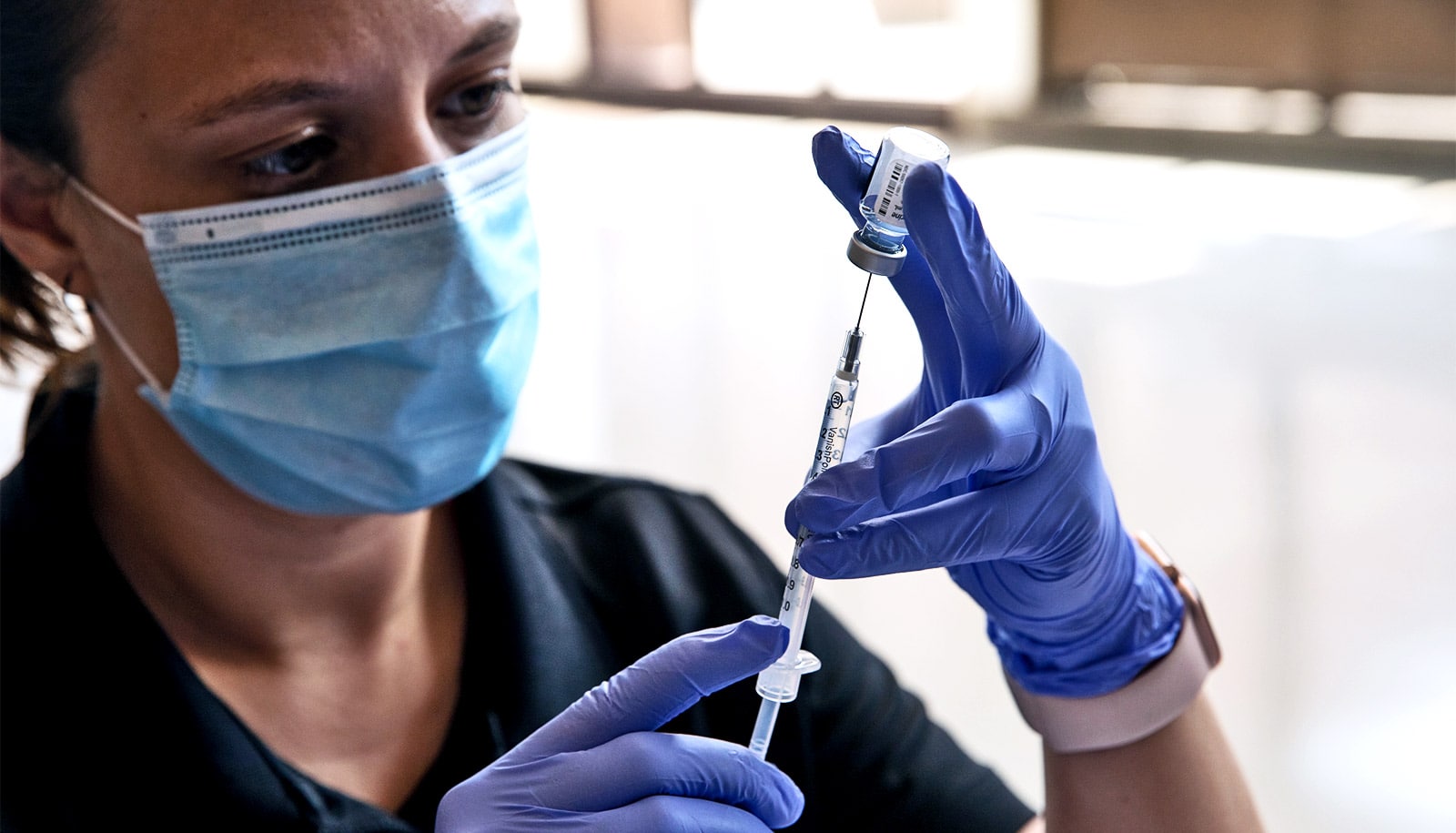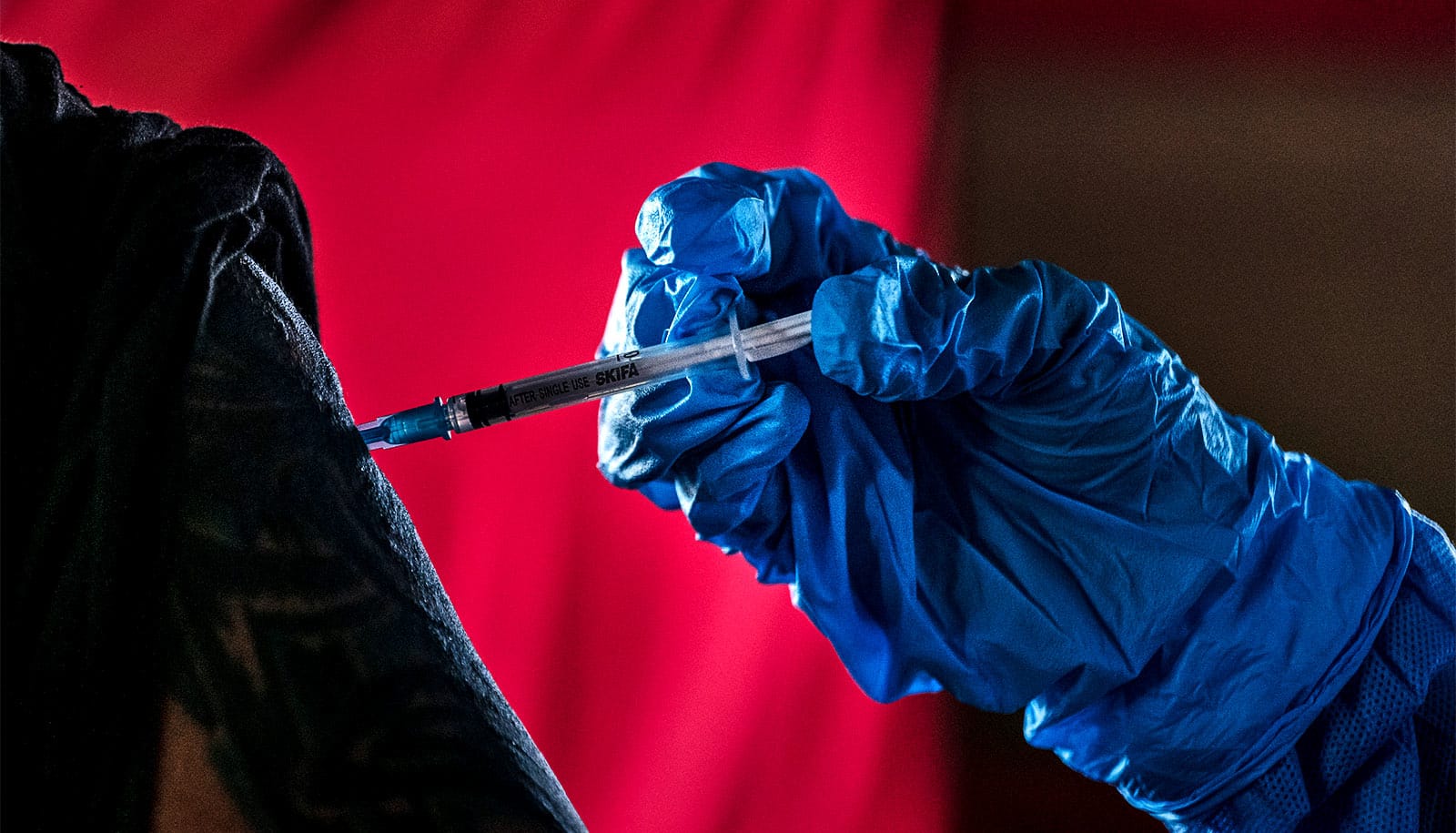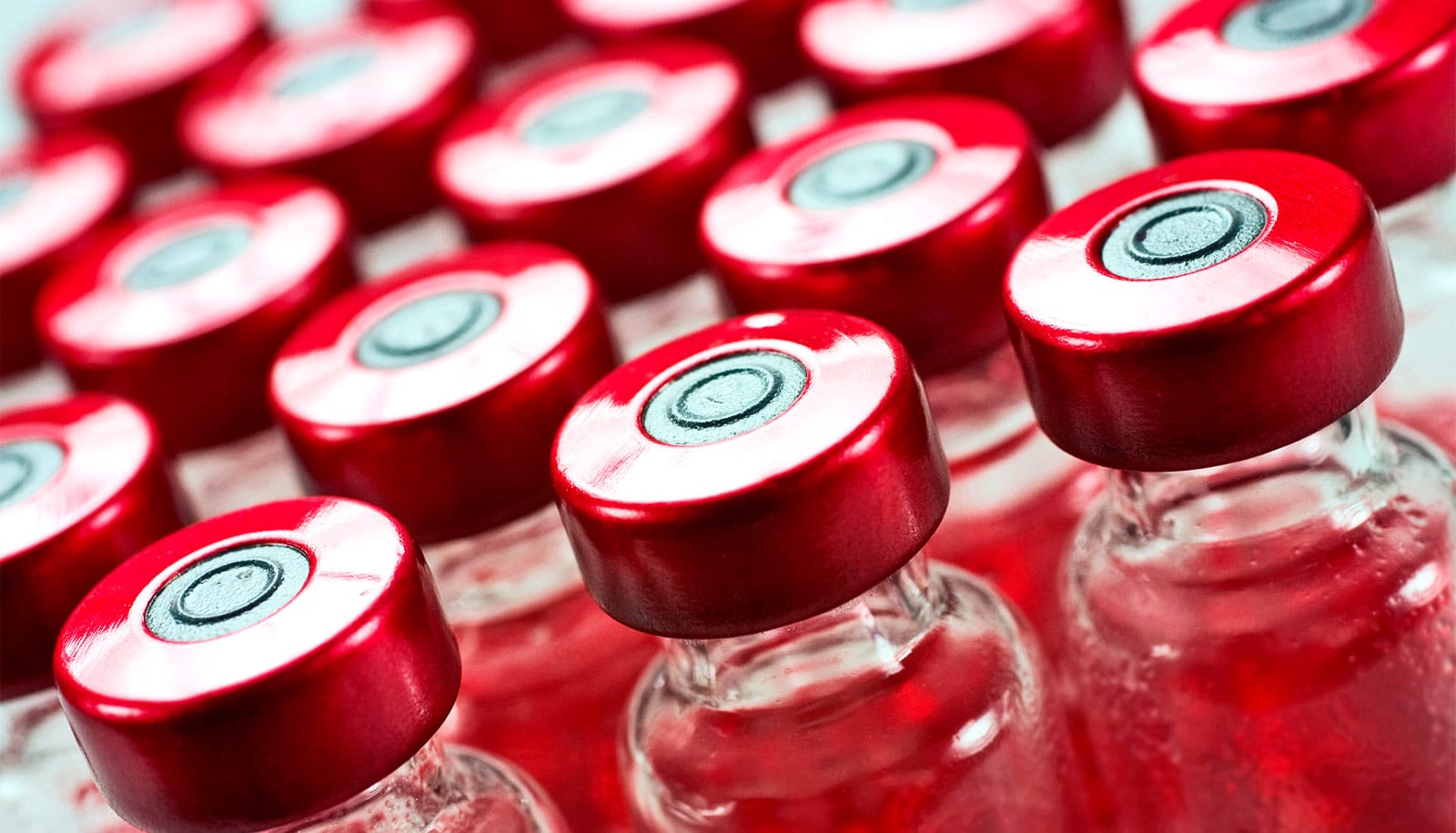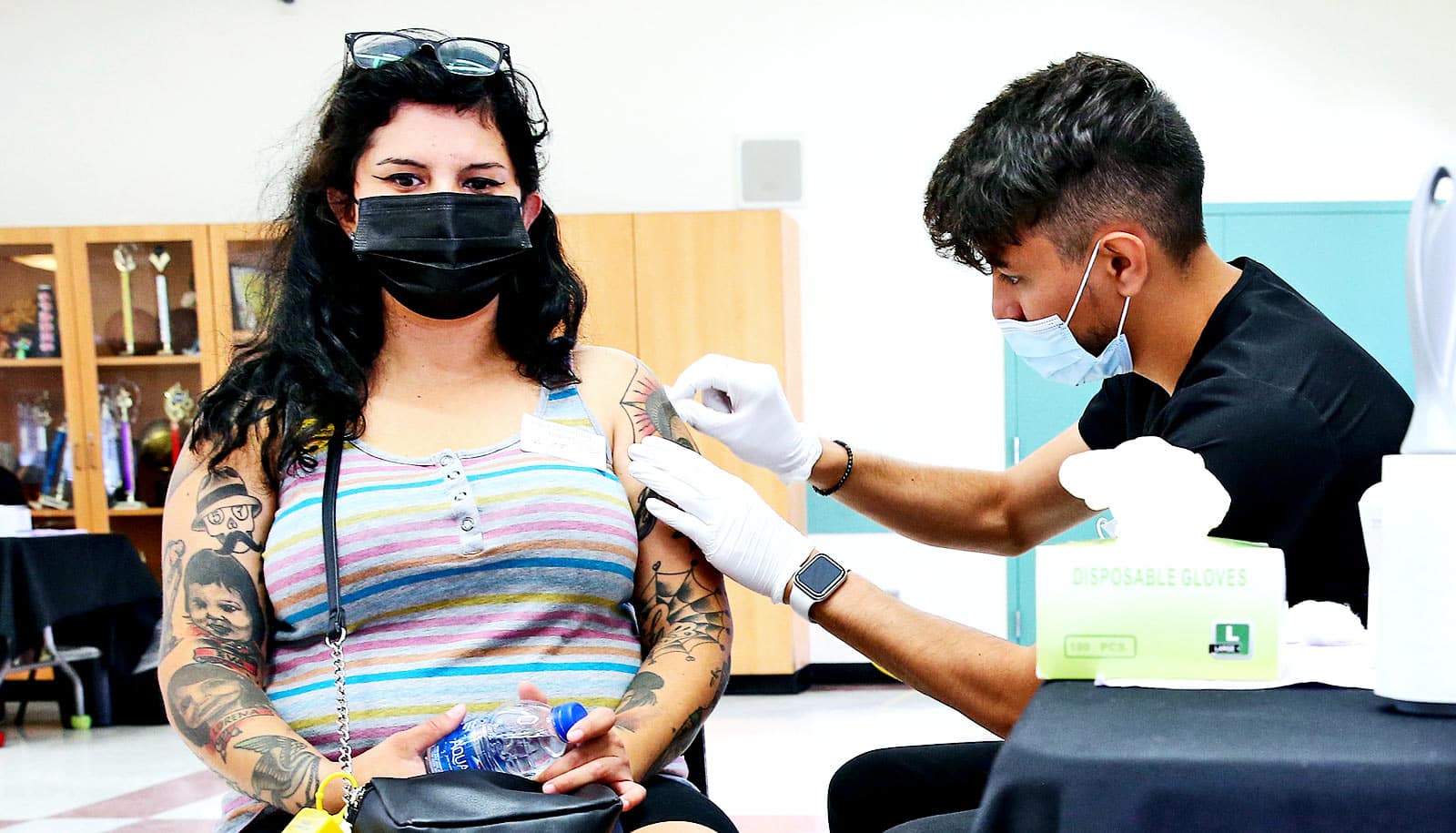After the Biden administration’s announcement on COVID-19 booster shots, questions came up about the ethics of vaccinated people in the US getting a booster when so many people around the world are still waiting for their first dose.
And while we’re pondering ethics, is there a selfish argument for the US to lead efforts to vaccinate people around the world? What about vaccine mandates? And when will we be able to vaccinate kids?
Here, Julie Swann, professor of industrial and systems engineering, and Matt Koci, a virologist and immunologist and professor in the poultry science department, both at North Carolina State University, weigh in on these questions and more:
The Biden administration has said that people in the US who received mRNA vaccines (Pfizer and Moderna) may want to consider vaccine boosters eight months after their second shot. Does that raise ethical concerns related to global vaccine access, since many people in other nations haven’t been able to get their first dose of vaccine?
Julie Swann: We need to continue to help get people vaccinated globally. A virus doesn’t know borders, the society we live in is very connected globally, and there are too many people dying. As of August 28, vaccine trackers show that the vast majority of doses (over 80%) worldwide have been administered in countries that have high or upper-middle income. The US has committed to providing initial doses but can do more to make sure that people worldwide have access to vaccine.
The doses in US pharmacies, hospitals, clinics, and doctor’s offices cannot be given directly to other countries. The expiration date would be too soon and the logistics too complicated. So we have doses that can be used for boosters, and also for children younger than 12 when they become eligible. We can vaccinate the American public while also helping others worldwide, especially given that vaccine manufacturing has now scaled up.
Matt Koci: Yes, we should be able to do both. The goal of the vaccines, beyond saving lives, is to help stop the virus from replicating uncontrollably around the world. Unfortunately, over the past 28 days the US has accounted for around 27% of all the confirmed cases in the world.
We need to help vaccinate the rest of the world, but we also owe it to the rest of the world to get our cases under control, so we don’t become the source of a new variant. Ideally that would be through getting nearly everyone vaccinated who is eligible. But if we can’t do that, and boosters can help tamp down breakthrough infections and limit case numbers, we should do that too.
I’ve heard several risk reduction and ethical arguments that Pfizer and Moderna should lift intellectual property protections to permit broader production and distribution of their vaccines. Could that make a significant difference for public health in the United States?
Koci: Other countries being able to make their own vaccine would help make sure they aren’t dependent on the US. In the long run, that helps us here, as that would mean the case numbers would start to go down everywhere faster, which means fewer chances of new variants, which means the whole thing will be over sooner.
But IP rights aren’t the thing holding these countries back from being able to make their own vaccine. They have to have the infrastructure. They have to have the expertise. If I gave you the blueprints for how to build a rocket ship, it would still take you years to build it.
Back when we were focused on influenza as the next pandemic (1997-February 2020), the Biomedical Advanced Research and Development Authority (BARDA) developed a program to train scientists around the world on how to make influenza vaccine to increase total global capacity. In fact, NC State’s BTEC was one of the places these scientists came to train. This program greatly expanded the expertise and capacity around the world, but that took years. And making flu vaccine is not the same process as mRNA COVID vaccine.
If the goal is to help these other countries produce their own vaccine, we need to do it based on what works for them and their infrastructure—not what works best in the US. Before December 2020, no human vaccine had to be kept at -80 Celsius. We didn’t even have the infrastructure.
There are other COVID vaccines out there that seem to work as well as the mRNA vaccines, that are based on technologies that would be easier for other countries to start to produce. We need to work on getting them making those vaccines. We can work on helping develop their capacity to make and distribute mRNA vaccines once we have COVID behind us.
Swann: There has been a lot of discussion about how best to increase vaccine manufacturing capacity worldwide. It is complicated, as location is just one piece of it. There are many components needed to produce vaccine like filters, chemicals, bioreactor bags, etc., and these have not been easy to source given the simultaneous demands for them. There must also be a trained workforce that can produce the different components and the whole. Producing everywhere is less efficient in terms of inventory, and if components are not produced everywhere then the system would still be subject to nationalism.
We do need to continue to find ways to increase the supply of vaccine doses in the short term, while planning a system that is efficient, effective, and equitable over the long term. Given the experiences during COVID-19, I think we will see the US and many countries worldwide try to increase manufacturing capacity in or near their country, and for medical counter measures that go well beyond vaccine.
From a risk reduction standpoint, is it better to mandate vaccines for the unvaccinated or to permit boosters for those who are already vaccinated?
Koci: If by risk reduction you mean what’s going to drive down the numbers of cases, especially the numbers of deaths and hospitalizations, that’s easy: Getting all eligible people vaccinated would be way more effective than boosters for those who have already been vaccinated. If we stayed on the trajectory we were on last spring, I don’t know if we’d be discussing booster shots right now. If we were, it would be in the context of helping protect kids under 12.
There are a lot of people who haven’t been vaccinated, but still feel free to walk around unmasked, acting as if the pandemic is over. This increases the risk of breakthrough infections for the vaccinated. There’s some data that suggest boosting the immunity in those already vaccinated might reduce how much they can spread the virus. Since the unvaccinated largely aren’t doing their part to help contain the spread, this is what we’re left with, especially for the immunocompromised and the most vulnerable.
Swann: The data that has been coming out shows that vaccinated people are getting COVID-19 at a greater rate than before, but they are still largely avoiding severe outcomes like hospitalization or death. They can be infectious to others, which is one reason it can be good to have everyone mask and test. However, people who are unvaccinated who have a case of COVID-19 can infect more people than someone who is vaccinated.
People who are unvaccinated are at much greater risk of hospitalization than someone who is vaccinated. This may be especially so under the Delta variant, which recent data suggest has a hospitalization rate about twice that of previous variants.
Given where we are right now, we could slow things down if everyone wore masks and we did widespread testing of asymptomatic people, followed by isolation for those who test positive. We cannot end the pandemic without either vaccinating a lot more people (children and adults), or by infecting a lot more people—leading to more hospitalizations, cases of long-COVID, and deaths. I prefer the safer route of vaccination.
One last question. I think I speak for a lot of parents when I ask whether you have any idea when we can expect government approval for vaccinating children under the age of 12. Also, do we have any idea what effect vaccinating kids might have on COVID transmission?
Swann: I, too, am eager for there to be a COVID-19 vaccine approved and recommended for children! I am currently hoping shots in arms are possible in December. We need to make sure that there is broad and equitable access to vaccine, and full effectiveness will likely be two weeks after a second dose. All of that will take time. Getting vaccination rates high enough to make a difference in cases, hospitalizations, and even school closures will also take time. Right now, most places don’t have high enough vaccination rates in youths 12-17 to prevent surges and significant hospitalizations.
Rather than thinking of getting to a clear “end” of the pandemic, I look for different kinds of milestones. If the virus’s characteristics don’t change significantly, and local hospitals are not beyond capacity, masks in schools can be safely lifted when enough children and youth are vaccinated. That ensures protection for the kids and that continued education in person is safe. That strategy also helps to protect the community.
The connection to hospital status is important, because when hospitals are full (because of COVID-19 patients), then mortality increases (even for non-COVID-19 patients). With the Delta variant, we are seeing more kids in the hospital, and it is possible that this is because the virus is more severe than it was a year ago.
We also need to continue focusing on equity in uptake, and administration of vaccine in children may show different patterns than with adults. For example, does it take longer to vaccinate kids, since pharmacists may not have the right to assist in all states? Will kids have opportunities for vaccination outside of school hours and when special transportation might be needed to get there? If hospitals are still dealing with an acute surge of cases, are there resources available to run mass vaccination clinics? I am expecting vaccination rates for children to be slower than we saw for adults.
When will we all feel comfortable eating together again? For me, having everyone in my household eligible for vaccination and receiving it is a necessity. For someone with immunity that is compromised significantly (such as people receiving cancer treatment), it may take more.
I also want to make sure that I am not contributing to the surge that overwhelms hospitals, so I might be extra careful during times when the hospital system is overwhelmed in case I am unknowingly spreading COVID-19 to others in the community.
When will it be okay to travel? Well, what kind of travel? Domestic or international? Driving or flying? These details affect the risk. Testing before and after a trip can make sure you aren’t bringing COVID-19 into your household or spreading it in the community. Feeling safe traveling internationally may take more time, as variants are more likely when virus is circulating widely—as it may until we vaccinate more people globally.
The “end” will be more like a series of small victories, which will differ by location, by family circumstances, and by comfort level with risk. Those small wins may come with some setbacks, if the virus variant changes and begins reinfecting more people, or if it causes increased hospitalizations and hospitals become overwhelmed again. The “new normal” won’t be exactly like the old normal. Getting our children vaccinated is like winning one more battle in a multi-year war.
Koci: Your question is a great one, but I don’t know if there is a good answer. That is a large part of the frustration everyone is feeling right now. When you’re running a marathon, they put mile markers up for a reason—so you can pace yourself; so you know how much longer the pain and discomfort is going to last.
All last year the public was told that a vaccine was our best hope for getting through the pandemic. The pandemic was never going to magically be over once the vaccine was out; it was always going to take a while. Likely a year or two before things settled into whatever the post-pandemic period was going to look like, but that’s not really the message people heard.
If states, school systems, and society are going to try and open back up under the current conditions, political leaders and federal agencies (particularly the FDA and CDC) need to do a better job of keeping people informed on where we are and when we can expect decisions to be made.
Swann is a systems engineer with expertise in vaccine distribution whose work focuses on making health care and supply chains more efficient, effective, and equitable. Koci’s work focuses on host-microbe interactions in birds.
Source: NC State



